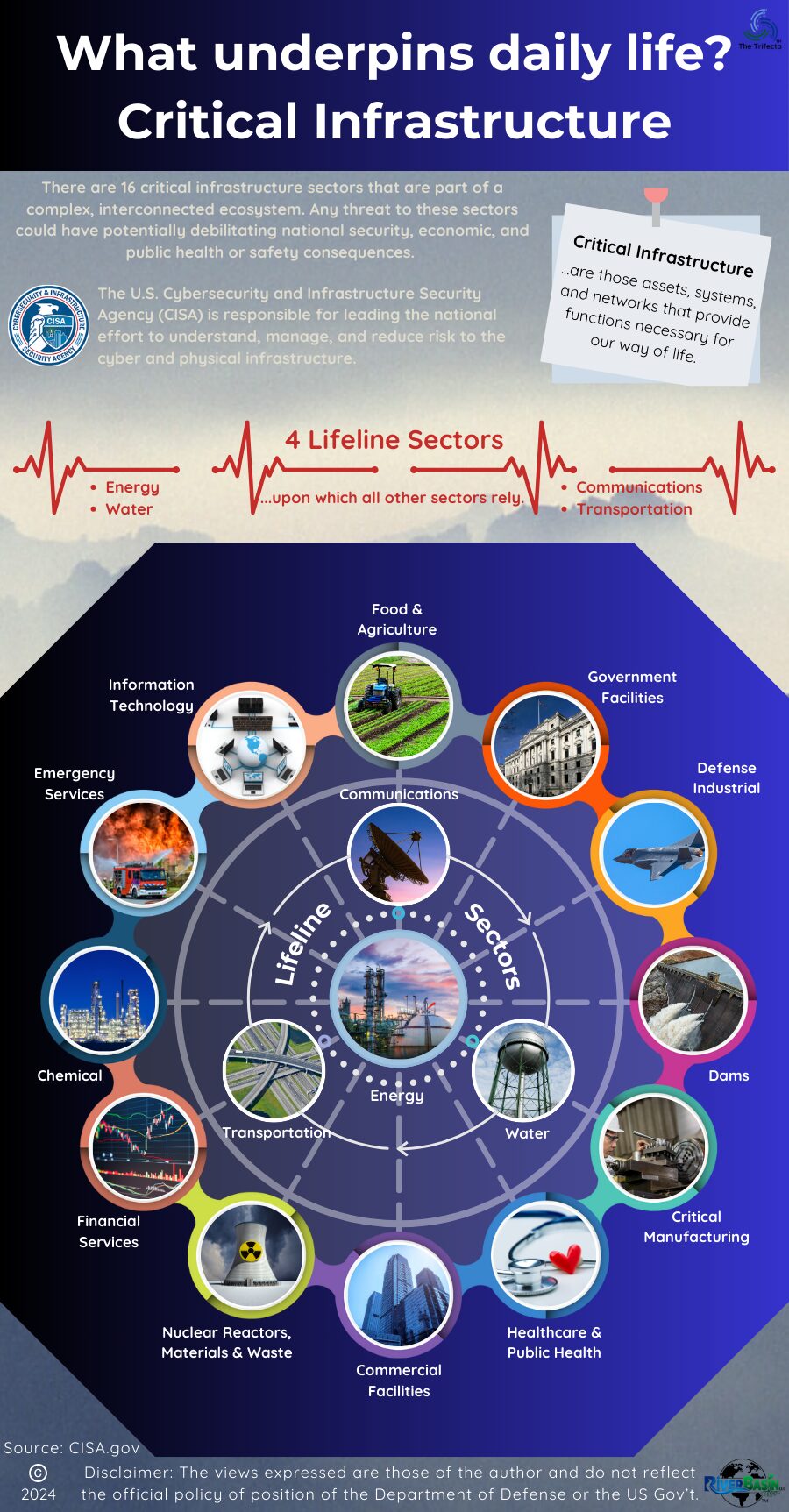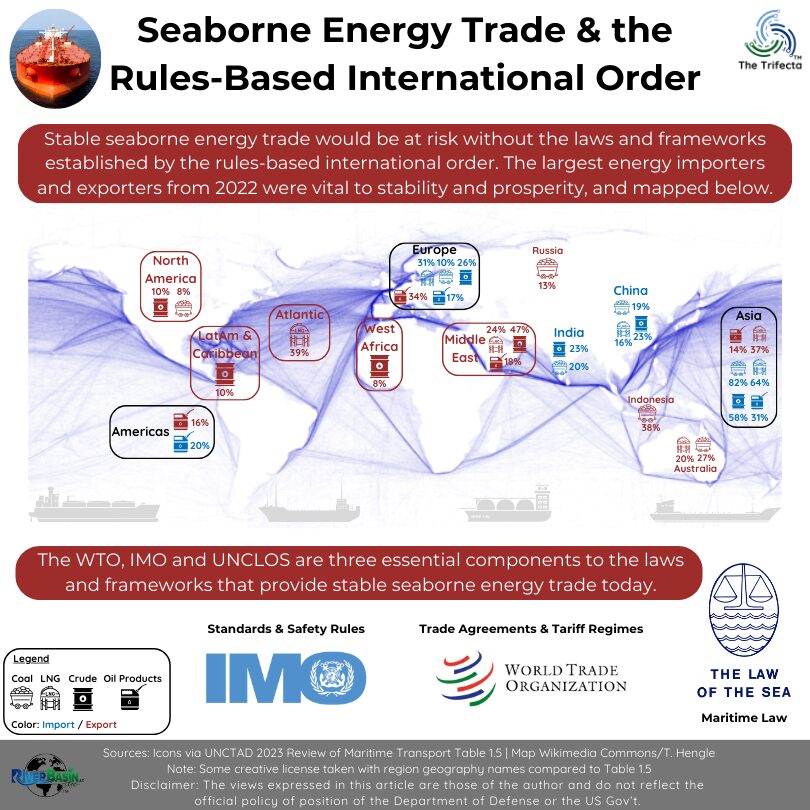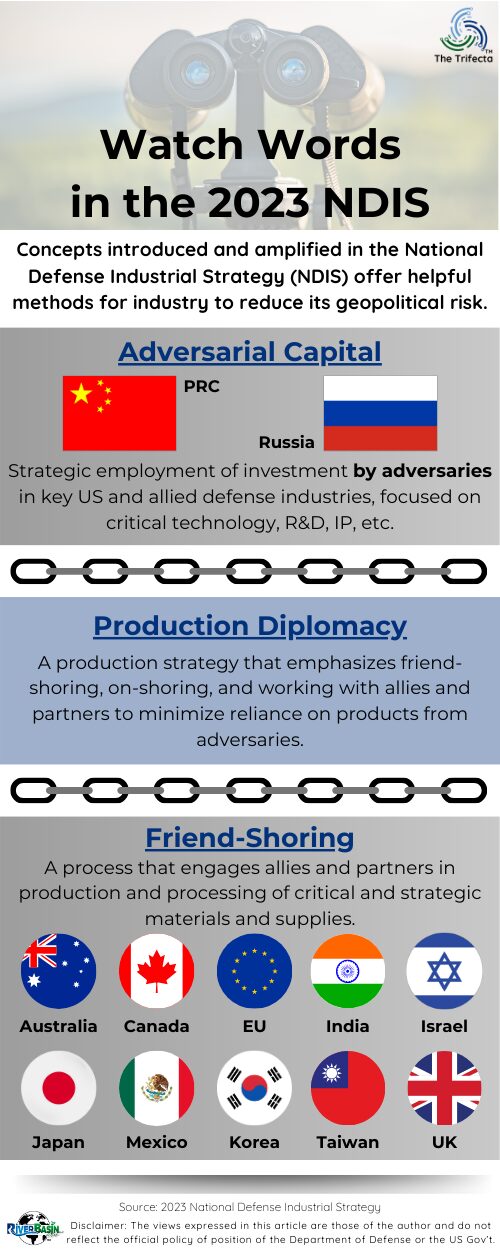NSS 103: Three Phases of Energy Security since 1987
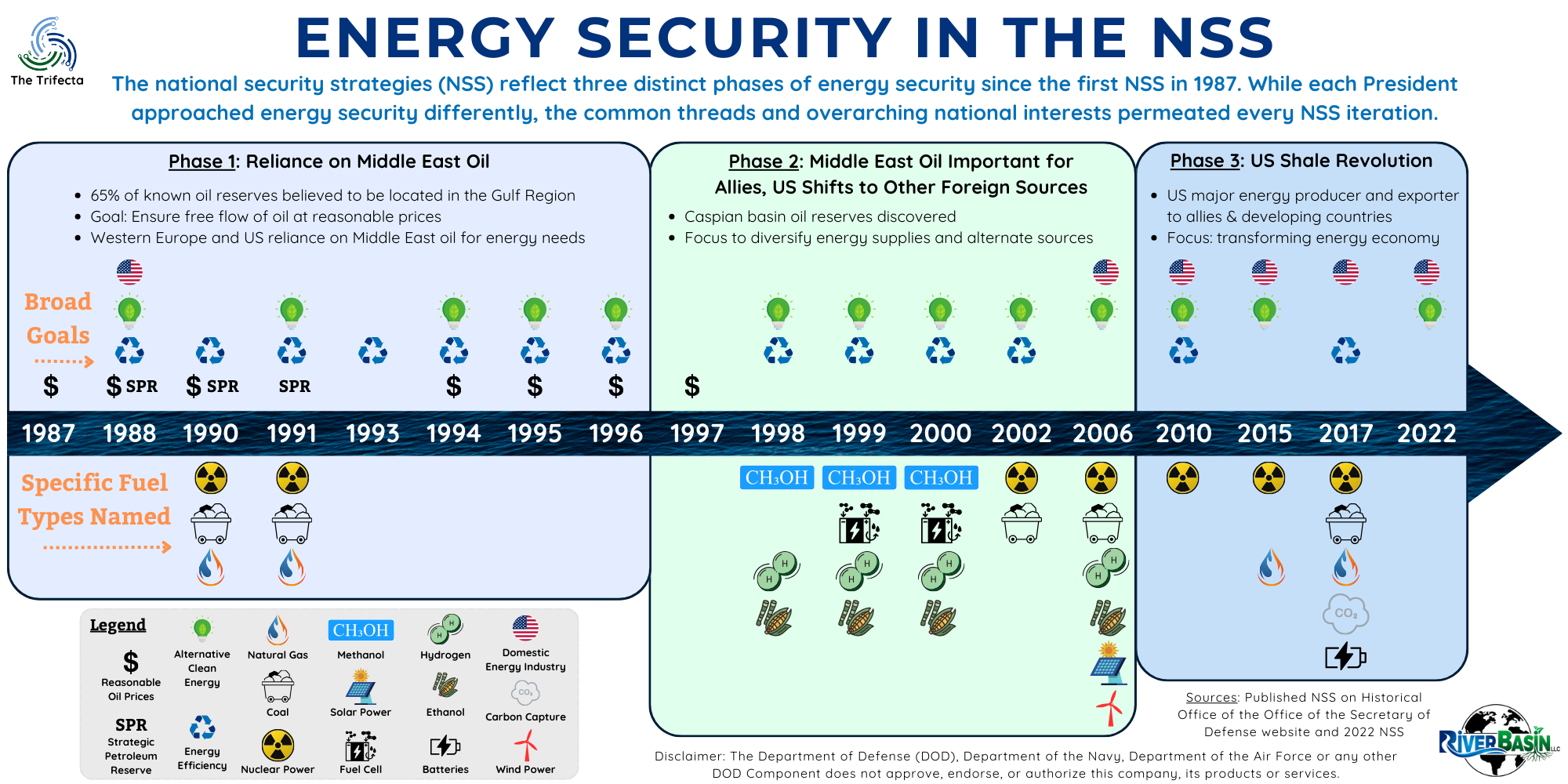
BLUF
The national security strategies (NSS) reflect three distinct phases of energy security since the first NSS in 1987. While each President approached energy security differently, the common threads and overarching national interests permeated every NSS iteration. The NSS is a critical document that outlines the country’s approach to safeguarding its interests and addressing potential threats. Energy security has always been an integral part of this strategy, reflecting the recognition that reliable and resilient energy supplies are vital to national security. If the energy story arc is already familiar, allow me to frame it differently.
Why does this matter?
Energy companies may already appreciate the essential role they have in the national security landscape by providing the energy that unpins daily life. More than supporting Americans and the US economy, work by energy companies enables US policy makers to support Allies and partners, which further stabilizes life at home. Energy companies often operate in multiple countries and regions. They have a vested interest in geopolitical stability because conflicts or disruptions in key energy-producing regions can directly impact their supply chains and operations. Energy security efforts, such as diversification of energy sources, help mitigate these geopolitical risks. Ensuring energy security in the context of sustainable energy is crucial for achieving climate goals and reducing environmental impacts. Environmental sustainability is closely tied to long-term business viability.
Key Take-Aways
- Phase 1: In 1987, the US viewed ensuring access to foreign oil at reasonable prices as a critical national security aim.
- Phase 2: After transitioning US energy sources in the late 1990s, the US still cared about the Middle East because it supplied our Allies with energy.
- Phase 3: After the shale revolution, everything changed. The US flirted with energy independence but reverted to energy security because the viability of our allies is also vital to our own national security.
Disclaimers: The views expressed in this article are those of the author and do not reflect the official policy or position of the Department of Defense or the U.S. Government. The appearance of external hyperlinks does not constitute endorsement by the United States Department of Defense (DoD) of the linked websites. The DoD does not exercise any editorial, security or other control over the information you may find at these locations.
Read NSS 101 and NSS 102 for related content. The Trifecta launch stated that this site will not discuss politics, even though it shapes everything. “What” is the focus of this article. The reasons for including energy issues in the NSS are complex and political, requiring dissertations to fully address.
Unless otherwise linked, this post is based on pre-2022 NSS archived by the Historical Office of the Office of the Secretary of Defense The NSS are not linked throughout and are available at that site.
Phase 1: In 1987, the US viewed ensuring access to foreign oil at reasonable prices as a critical national security aim.
To emphasize the thinking, consider these data points outlined in the first 10 years of NSS publications (1987-1997). Presidents noted 40% of US energy came from oil and roughly half the oil was imported. The Middle East, containing ~66% of the world’s known oil reserves, was the main import source. With the 1973 oil shock still fresh in the American consciousness, everyone inherently understood the criticality of access to oil as part of national security and stability at home. The sentiment of this short period in US history can be remembered by elder readers.
The Goldwater-Nichols Act of 1986 required a national security strategy to be published by US Presidents. (see NSS 101 for more background) When authoring the inaugural 1987 NSS, the President reflected on his first six years in office. Coming into office in 1981, reinvigorating the world economic system after the energy crisis, was one of the President’s four short-term goals. Part of the second US interest he articulated was ensuring US and Allied access to foreign energy. Western Europe received about 60% of its oil supply via sea from the Persian Gulf.
Shift to a more proactive stance
By the 1988 NSS, the President’s thinking shifted to a more proactive stance, while still recognizing the stark reality of foreign energy dependance. The NSS outlined objectives to strengthen the domestic energy industry, diversify energy sources, and improve energy efficiency. To reduce supply vulnerability, the President focused on expanding the Strategic Petroleum Reserve (SPR), developing international relationships and conducting research and development on alternative power sources.
Presidents from 1990 to 1996 cast energy security in a similar light in their national security strategies. Energy conservation, energy efficiency and diversification of energy sources were the primary themes of the time. The Presidents maintained effort in the areas highlighted by previous administrations, while also adding focus on nuclear, coal, natural gas, and renewables. At no time during this period was energy independence discussed as a national security goal; it was always energy security.
Phase 2: After transitioning US energy sources in the late 1990s, the US still cared about the Middle East because it supplied our Allies with energy.
The President documented the shift away from Middle East imports in the 1997 NSS because Venezuela had became the #1 foreign oil supplier to the US. According to Energy Information Administration (EIA) data, the US imported 647 million barrels of crude oil and petroleum products from Venezuela in 1997, followed by Canada with 570 million barrels. But, that was the third year Venezuela was the #1 foreign oil supplier to the US. As shown in Figure 1, Venezuela was the #1 foreign oil supplier to the US from 1995 to 1998.
The President noted in 1997 that oil from Venezuela, Canada and Mexico exceeded US imports from Arab OPEC countries by a factor of two. Total from Venezuela, Canada and Mexico was 1.72 billion barrels in 1997, contrasted with 639 million barrels from Arab OPEC countries. Oil still represented 40% of US energy with half being imported.
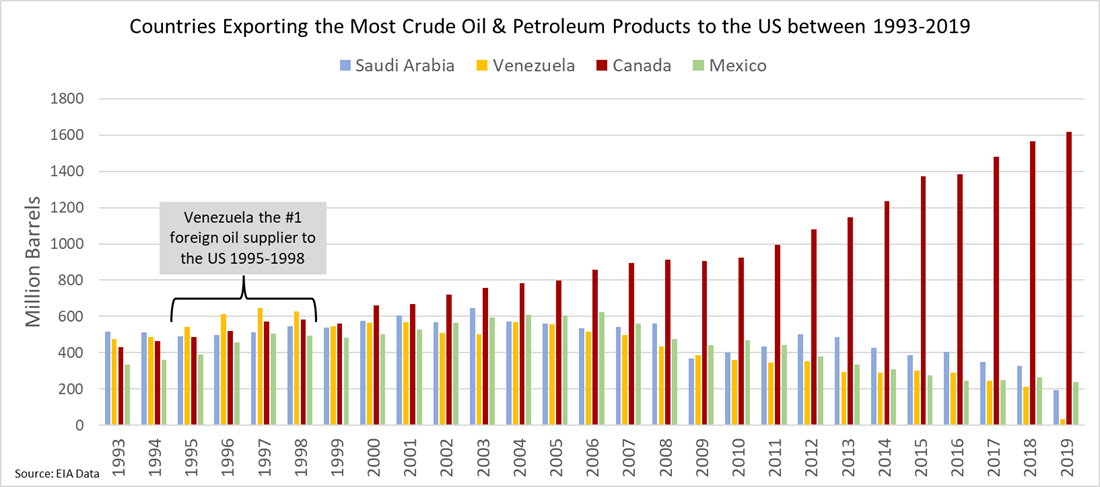
Figure 1: Foreign oil suppliers to the US between 1993 and 2019
During this time, oil reserves were discovered in the Caspian Basin and believed to hold 200 billion barrels. (In the 1998 NSS, this estimate dropped to 160 billion barrels.) The discovery and development of non-Middle East oil reserves was a watershed moment that recast the global oil landscape. It changed the perspective on resource availability and options for pursuing energy security.
But access to foreign oil was still a vital national security interest
Through the rest of the late 1990s and last reflected in the 2000 NSS, the US shifted away from Middle East oil, in line with national security goals for energy security. However, this shift did not decrease the importance of Middle East oil. In fact, the President identified ensuring access to foreign oil sources as a vital national security interest in his 2000 NSS (p45). He based this distinction on the global nature of the international oil market (p77). The President defined a vital interest as “directly connected to the survival, safety and vitality of our nation” (2000 NSS p9). During this time, Europe and Japan imported 80% of their oil from the Persian Gulf. The NSS language shifted to a focus on “maintaining worldwide access” to Middle East energy (p73) and reflected US commitment to allies and partners.
Besides shifting away from Middle East oil, the NSS vision for energy security incorporated other lines of effort. During the late 1990s, energy conservation and research and development supporting energy security expanded in scope. focused on alternative fuels such as hydrogen, ethanol, fuel cells, and methanol. Conservation efforts expanded beyond vehicles to include energy-efficient buildings, appliances, and industrial systems (1999 NSS). The President noted the would also help address concerns about climate change by reducing GHG emissions. The 2002 NSS included the President’s vision on expanding types of energy, developing cleaner technologies, and improving vehicle fuel economy. These expanded efforts would further provide energy security by reducing dependency on fossil fuels, regardless of their origin.
Phase 3: After the shale revolution, everything changed. The US flirted with energy independence but reverted to energy security because our allies are vital to our national security.
Explosion of the US domestic gas (~2005) and oil (~2008) industry changed the US energy security position and calculus. Analysts have extensively covered the topic in literature, and we won’t go over it again. In the national security strategies, a tectonic shift in position clearly came through. The US could help its allies, partners and developing countries with energy exports because of the domestic energy industry. The approach to energy security varied among the four Presidents after the shale revolution, and they each packaged their vision differently in the NSS.
In the 2006 NSS, the President broached a vision of energy independence, with diversity of energy types and regions of the world underpinning this goal. Specifically, nuclear, zero-emission coal plants, solar, wind, ethanol and hydrogen were options reflected in the NSS. Despite the known dangers, carbon-neutrality made nuclear power a preference.
As part of the President’s expanded view on energy security, the US joined the 2005 Asia-Pacific Partnership for Clean Development and Climate (APP). The APP sought to address energy security, climate change, and air pollution in a manner that encouraged economic development and reduced poverty. The President’s vision in the NSS included opening, integrating, and diversifying energy markets. This contained tones of the similar US approach to opening all markets in the decades following World War II and the Cold War.
Positioning as a leader in the energy transition
The President’s vision in the NSS for energy security then moved to focus heavily on positioning the US to be a leader in an energy transition. In the 2010 NSS, the President focused the section “Transform our Energy Economy” on innovation, science and technology. The dual goals were to ensure energy availability by reducing dependance on fossil fuels while also mitigating environmental destruction. A domestic energy industry leading the world via clean technology would achieve this goal.
As a prelude to the 2015 NSS, recall Russia’s invasion and annexation of Ukraine’s Crimean Peninsula in 2014. The invasion caused the President to remark in the NSS, “The challenges faced by Ukrainian and European dependence on Russian energy supplies puts a spotlight on the need for an expanded view of energy security that recognizes the collective needs of the United States, our allies, and trading partners as well as the importance of competitive energy markets” (p16). These geopolitical events brought the US’s responsibility to the Allies to the foreground. In the NSS, the President called for an “all-of-the-above energy strategy for a low carbon world” (p16). Energy independence was off the table and energy security included considerations for allies.
In the 2017 NSS, the President shifted from framing the issue as energy security and discussed “energy dominance.” He characterized energy dominance to mean ensuring our own energy security while also prioritizing helping others. The President outlined five Priority Actions in his 2017 NSS to show energy dominance. Two priority actions were focused outside the US. “Promoting Exports” identified the benefit US energy could have for allies and partners to diversify their energy sources. “Attaining Universal Energy Access” acknowledged the role of energy in reducing poverty, foster economic growth and promote prosperity.
Together in the NSS: “Climate and Energy Security”
Most recently, the 2022 NSS is the first to include a combined section called “Climate and Energy Security.” Energy independence is nowhere to be found in the NSS. In contrast, energy security features prominently throughout because of Russia’s weaponization of energy during Putin’s war in Ukraine. (standby for later posts on this)
The President’s vision for energy security has two primary thrusts. First, by pursuing the energy transition and investing in new industries via policies like the Inflation Reduction Act (IRA) and Bipartisan Infrastructure Law (BIL). These efforts are proactive and seek to redefine our future situation. The second thrust includes preparing for the potential consequences of climate change. Energy security, in this sense, includes incorporating resiliency measures into planning and investment. These efforts are a safeguard in case the energy transition falls short of expectations. Throughout the NSS, the President is clear that the fate of US Allies and their energy security is a vital national interest.

DOPSR 24-P-0111
Think About It…
- How is your business taking part in the energy transition?
- What new technology does your business help proliferate?
- When was the last time your business conducted an in-depth evaluation of your supply chains?
- How did Russia’s invasion of Ukraine impact your business operations?
- What policies does your business advocate and how do those policies support energy security?
- What internal energy security measures does your business use to ensure continuity of operations?



